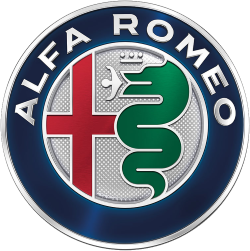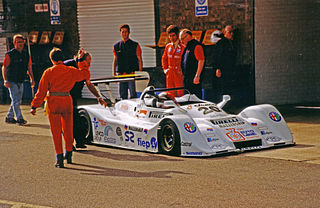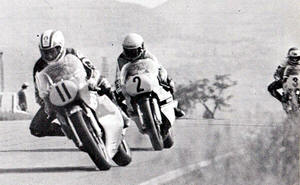
Marco Lucchinelli is an Italian former Grand Prix motorcycle road racer. In 1981 he won the FIM 500cc World Championship.
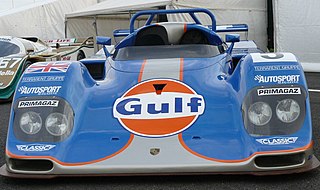
The Kremer K8 Spyder, along with its predecessor, the K7 (1992-1993), were open-cockpit prototypes built by Kremer Racing for use in multiple sportscar series, such as the IMSA GT Championship, Interserie, and International Sports Racing Series. The cars shared many components from the retired Porsche 962 and would eventually go on to win the 24 Hours of Daytona and several championships.

Formula Renault 2.0 Alps was a category of Formula Renault open-wheel racing, created by the merging of the Formula Renault 2.0 Middle European Championship and Formula Renault 2.0 Italia.

Daniel Zampieri is an Italian racing driver.
Tom Dillmann is a French racing driver, currently competing for NIO Formula E Team, in Formula E. He is probably best known for winning the German Formula Three Championship in the 2010 season and the Formula V8 3.5 Championship in the 2016 3.5 season.

Sergey Olegovich Sirotkin is a Russian professional racing driver who competed in Formula One in 2018 for the Williams team.

Robin Donovan is a British former racing driver. He is best known for competing in 14 editions of the Le Mans 24 hours race; his best result there being 6th overall, 3rd in class (LMP1) and 1st privateer home driving with 5 x Le Mans winner Derek Bell MBE and Daytona 24 hours winner Jurgen Lassig in 1994 with the Gulf Racing entered and sponsored Kremer Porsche K8.

The Debora LMP296 was a Le Mans Prototype, built by Debora Automobiles in 1996 for use in the 24 Hours of Le Mans. The car was originally entered with a 2-litre turbocharged Cosworth straight-four engine, but several other engines were used in the car's three-year career. Two cars are known to have been built. In conjunction with the LMP297, the car helped Waterair Sport to the International Sports Racing Series SR2 Team's Championship in 1998. The LMP296 was updated into the LMP299 for 2000.
Greaves Motorsport is a British racing team, currently competing in the European Le Mans Series and the 24 Hours of Le Mans.
The Debora LMP200 was a Le Mans Prototype, built by Debora in 2001 for use in the European Le Mans Series. Initially fitted with a 3.2-litre BMW straight-six engine, it was refitted with a 3-litre BMW straight-six in 2002, and then a 3.4-litre Mader-BMW straight-six in 2003. One car is known to have been built. The LMP200 was used by Didier Bonnet Racing when they won the European Le Mans Series in 2001.
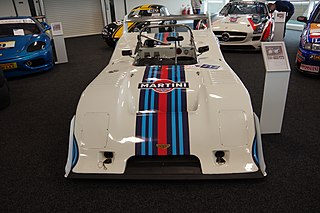
The Chevron B31 was a sports prototype racing car built by Chevron Cars Ltd in 1975, and initially used in the European 2-Litre Championship. The car was an evolution of the Chevron B26, and was initially fitted with a 2-litre Hart 420R straight-four engine producing 290 hp. However, various other engines were used; the car also ran with engines such as the 3-litre Cosworth DFV V8, the 2-litre Cosworth FVD/Cosworth BDG straight-four engines, and the 2-litre BMW M12 straight-four, amongst others.
The Debora SP93 was a C3 class sports-prototype built by Debora for hillclimbing and for the French Coupe Alfa Romeo. It was updated to the Debora LMP294 in 1994 for the same event. Both cars were fitted with a 3-litre Alfa Romeo V6 engine, and both were run at the 24 Hours of Le Mans by Didier Bonnet Racing. Only two chassis, #C393-01 for Le Mans and #C393-02 for the "Coupe Alfa Romeo", were built, and were used for both the SP93 and the LMP294.
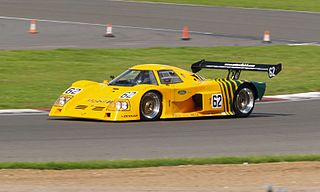
The Ford C100 is a sports racing car, initially built and run as a Group 6 car, but later as a Group C car. The C100 was built by Ford in 1981, and initially featured a 4-litre Cosworth DFL V8 engine, which was replaced by a 3.3-litre version of the same engine in 1983, after the car had passed to private hands. Five cars are known to have been built. Although the cars were often very quick in qualifying, reliability problems plagued them, and restricted their successes to two Deutsche Rennsport Meisterschaft victories in 1982, and a single Thundersports victory in 1983. Following the end of Ford's involvement in the C100 project in 1983, Zakspeed modified one of the chassis into the C1/4, which used a 1.8-litre turbocharged in-line 4 from their Group 5 Ford Capri. The C100 was also evolved into the Zakspeed C1/8, which used the 4-litre Cosworth DFL in a C1/4 chassis. The Zakspeed cars would prove to be far more successful than the C100 had ever been, and Klaus Niedzwiedz used a C1/8 to win the Interserie in 1984.
The Lotec 681 was a sports prototype racing car, built by Lotec in 1981. Fitted with a BMW M88 straight-six engine, the car had a reasonably successful, albeit very brief, career before it was replaced by the Lotec M1C in 1982. One car was built.
The Lechner Spyder SC91 was a sports prototype racing car, originally built by Reynard Motorsport for Walter Lechner and his Walter Lechner Racing School Interserie team in 1991. The car was rebuilt as the Reynard Spyder in 1993, and became known as the Reynard Horag in 1997. Throughout its career, it used a Formula 1-derived 3.5-litre Judd V10 engine. One car was built, and it proved successful; taking the Interserie Division I title in 1997 and 1998, in addition to being the strongest non-Porsche 962 in 1991, and the strongest non-Kremer CK7 Spyder in 1993.
The McLaren C8 was a Group C racing car built in 1982. Starting out life as a 1972 McLaren M8F, the C8 used a 454 cu in (7,440 cc) Chevrolet V8 engine. The car proved to be fragile, and it often retired from races. Peter Hoffmann owned the sole C8, and ran it until 1999.

The Lavaggi LS1 was a Le Mans Prototype (LMP) built by Scuderia Lavaggi. Built in 2005, the LS1, initially using a 6-litre Ford V8 engine, made its racing debut the following year. However, the car proved unreliable, and Lavaggi replaced the Ford engine with a 4-litre AER P32C twin-turbocharged V8 for the 2008 season, with no notable improvement in reliability or performance. The car was retired at the end of the 2009 season.

Willibert "Willi" Kauhsen is a German former racing driver and racing team owner from Eschweiler in Aachen, Germany.

